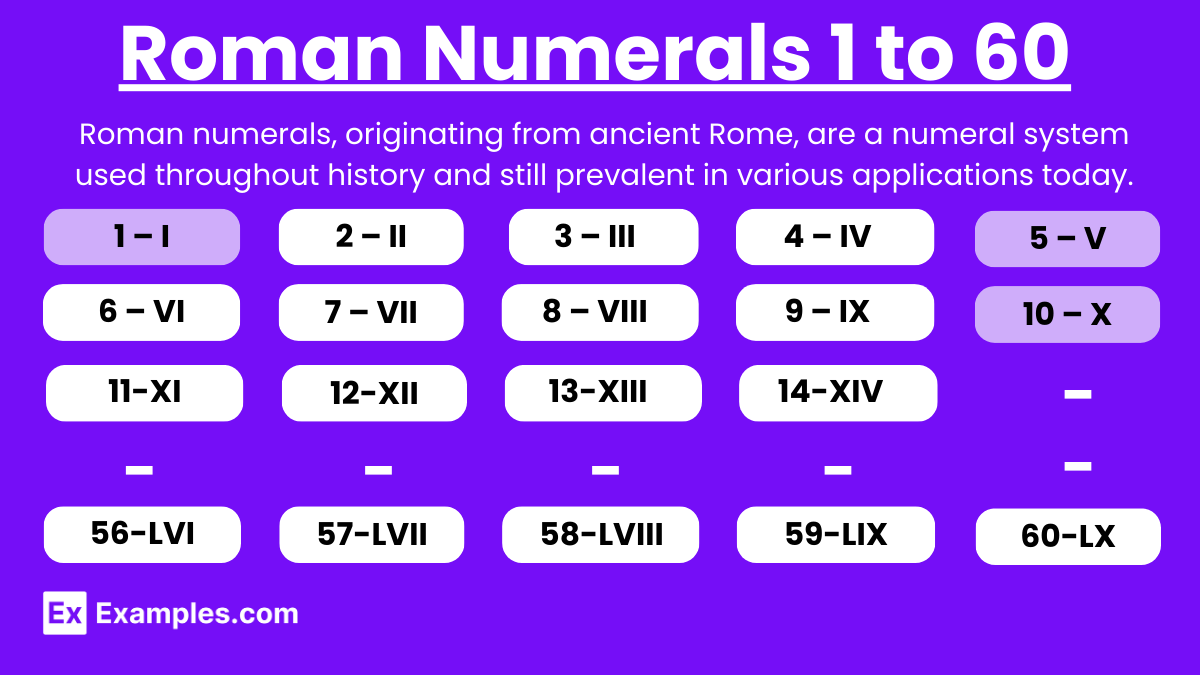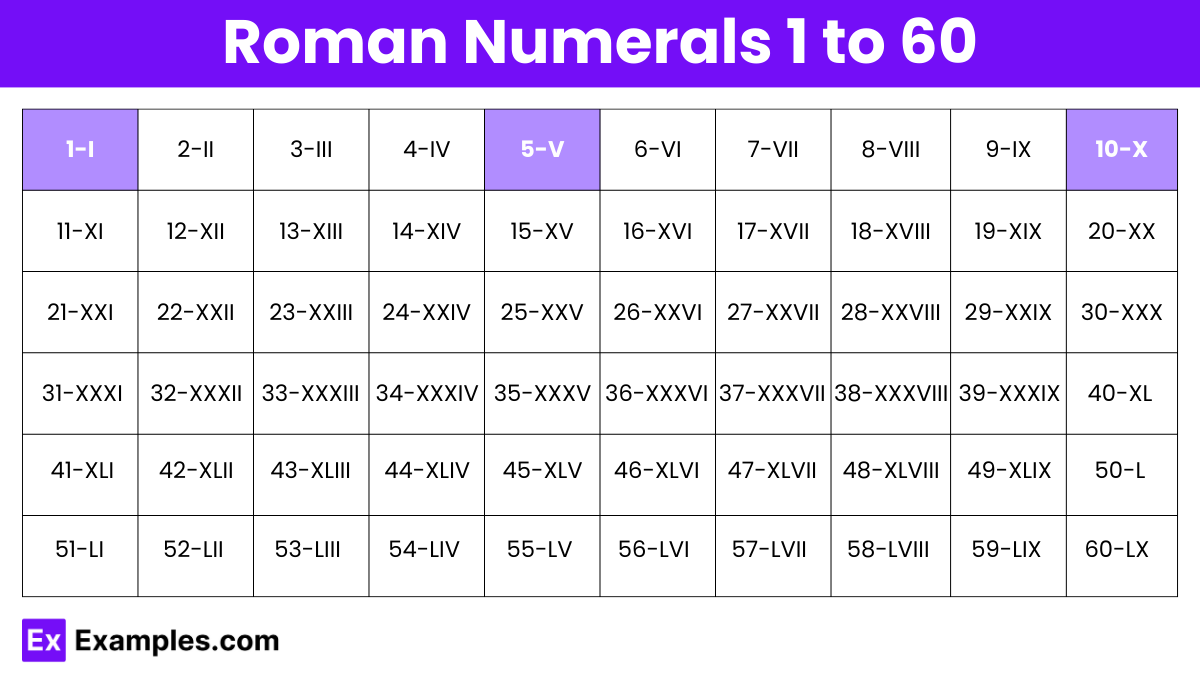What is the Roman numeral for 12?
XI
XII
XIII
X


Roman numerals, an ancient numeral system originating from Rome, are used in various applications today, such as in clock faces, book chapters, and movie sequels. The numerals from 1 to 60 are represented as follows: I (1), II (2), III (3), IV (4), V (5), VI (6), VII (7), VIII (8), IX (9), X (10), XI (11), XII (12), XIII (13), XIV (14), XV (15), XVI (16), XVII (17), XVIII (18), XIX (19), XX (20), XXI (21), XXII (22), XXIII (23), XXIV (24), XXV (25), XXVI (26), XXVII (27), XXVIII (28), XXIX (29), XXX (30), XXXI (31), XXXII (32), XXXIII (33), XXXIV (34), XXXV (35), XXXVI (36), XXXVII (37), XXXVIII (38), XXXIX (39), XL (40), XLI (41), XLII (42), XLIII (43), XLIV (44), XLV (45), XLVI (46), XLVII (47), XLVIII (48), XLIX (49), L (50), LI (51), LII (52), LIII (53), LIV (54), LV (55), LVI (56), LVII (57), LVIII (58), LIX (59), and LX (60). Learning these numerals not only aids in understanding historical texts and artifacts but also enhances cognitive skills through pattern recognition and memorization.
Download Roman Numerals 1 to 60 in PDF

Download Roman Numerals 1 to 60 in PDF
| 1-I | 31-XXXI |
| 2-II | 32-XXXII |
| 3-III | 33-XXXIII |
| 4-IV | 34-XXXIV |
| 5-V | 35-XXXV |
| 6-VI | 36-XXXVI |
| 7-VII | 37-XXXVII |
| 8-VIII | 38-XXXVIII |
| 9-IX | 39-XXXIX |
| 10-X | 40-XL |
| 11-XI | 41-XLI |
| 12-XII | 42-XLII |
| 13-XIII | 43-XLIII |
| 14-XIV | 44-XLIV |
| 15-XV | 45-XLV |
| 16-XVI | 46-XLVI |
| 17-XVII | 47-XLVII |
| 18-XVIII | 48-XLVIII |
| 19-XIX | 49-XLIX |
| 20-XX | 50-L |
| 21-XXI | 51-LI |
| 22-XXII | 52-LII |
| 23-XXIII | 53-LIII |
| 24-XXIV | 54-LIV |
| 25-XXV | 55-LV |
| 26-XXVI | 56-LVI |
| 27-XXVII | 57-LVII |
| 28-XXVIII | 58-LVIII |
| 29-XXIX | 59-LIX |
| 30-XXX | 60-LX |
Convert 8 to Roman Numeral:
Convert 14 to Roman Numeral:
Convert 29 to Roman Numeral:
Convert 37 to Roman Numeral:
Convert 44 to Roman Numeral:
Convert 52 to Roman Numeral:
Convert 58 to Roman Numeral:
Roman numerals from 1 to 60 encompass a range of symbols used in ancient Rome and beyond. From I (1) to LX (60), these numerals represent a system where smaller values are added to larger ones to create specific numbers. Basic numerals like I, V, X, L, and C are combined in various ways, such as II (2), III (3), IV (4), IX (9), XX (20), and XL (40), demonstrating both addition and subtraction principles. This system was crucial for counting, commerce, and timekeeping in Roman society and continues to be recognized in modern contexts for its historical significance and enduring legacy.
Text prompt
Add Tone
10 Examples of Public speaking
20 Examples of Gas lighting
What is the Roman numeral for 12?
XI
XII
XIII
X
How is 39 written in Roman numerals?
XXXIX
XXXVIII
XXXVII
XXXVI
What is the Roman numeral for 57?
LVI
LXX
LVII
LXXVII
Which Roman numeral represents 23?
XXIII
XXII
XXIV
XXV
How would you write 46 in Roman numerals?
XLIX
XLVII
XLV
XLVI
What is the Roman numeral for 31?
XXXIV
XXXIII
XXXII
XXXI
Which Roman numeral represents 52?
LII
LI
LXXII
LXXX
How is 28 written in Roman numerals?
XXVII
XXVIII
XXIX
XXV
What is the Roman numeral for 19?
XIX
XVIII
XXI
XVII
How would you write 43 in Roman numerals?
XLIII
XLII
XLIV
XLI
Before you leave, take our quick quiz to enhance your learning!

